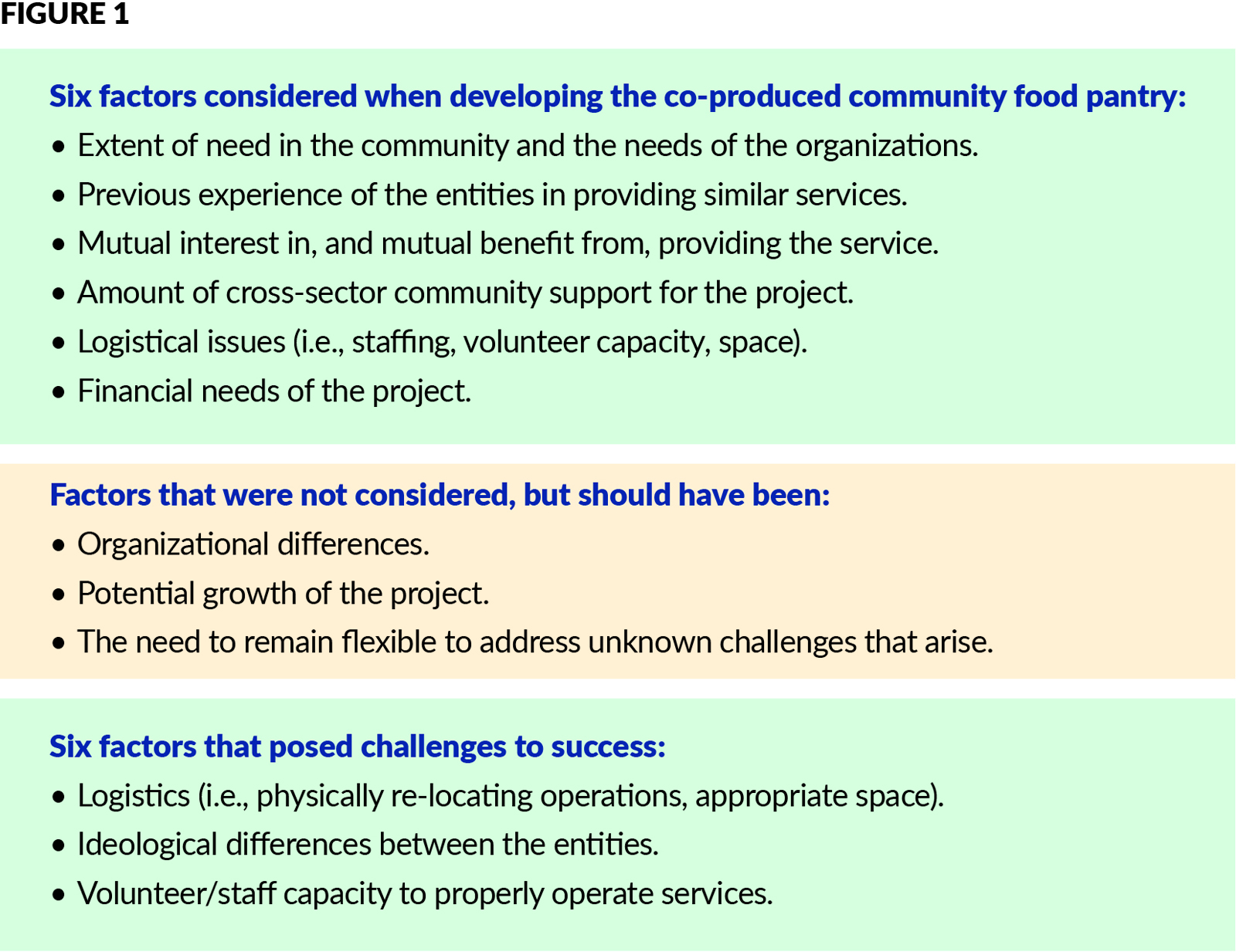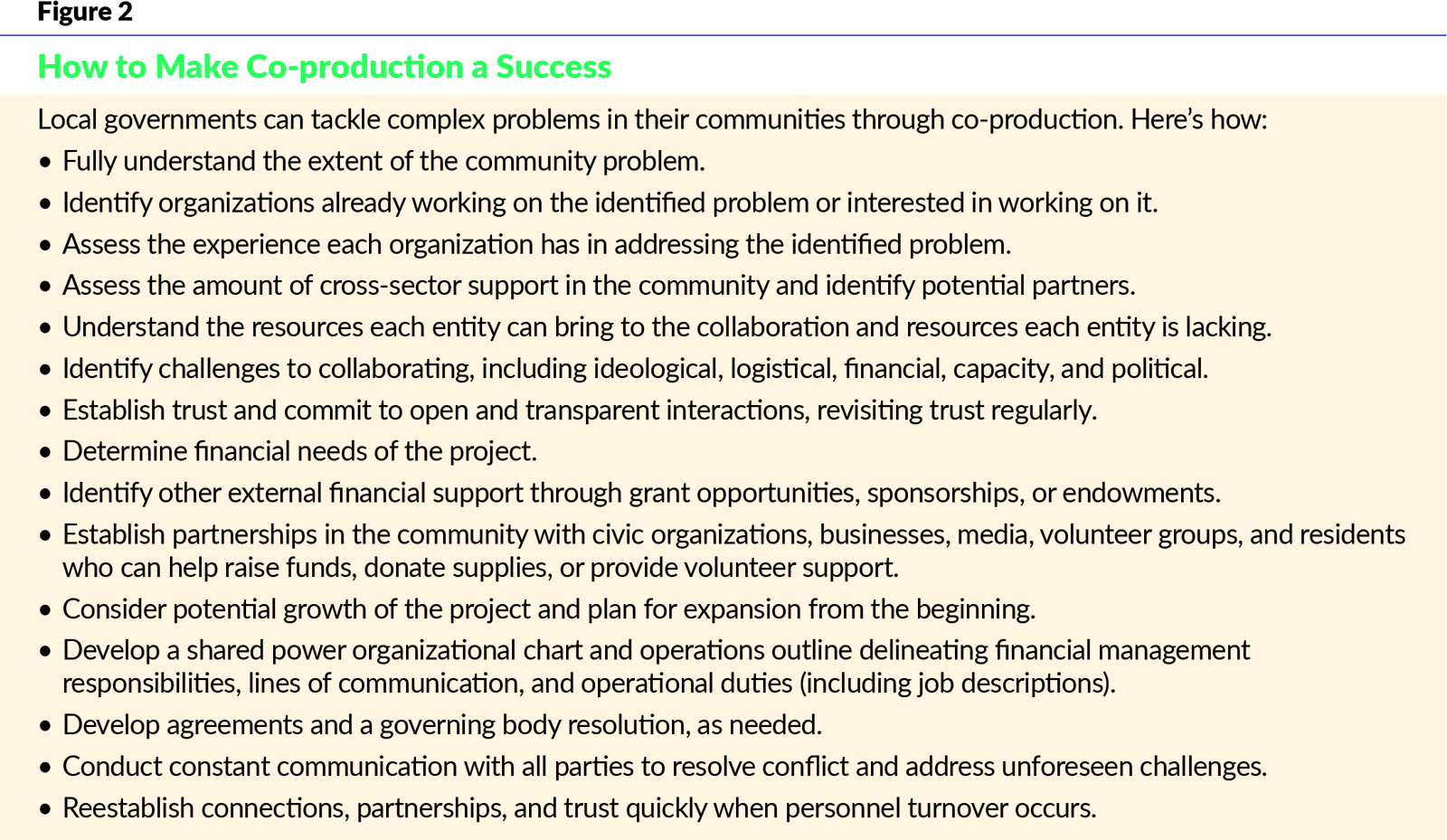
During economic downturns, municipal decision-makers often must make difficult budget decisions to reduce costs. However, their residents’ household budgets also become strained, as evidenced by the global financial crisis. During the last recession, Midwest municipalities saw property values plummet, mortgage foreclosures skyrocket, property tax foreclosures hit crisis levels, and unemployment rates reach higher than national averages. As a result, municipalities saw their tax revenue decline drastically, the demand for services increase, and new needs emerge among their residents.
Unfortunately, the current COVID-19 global pandemic has already wreaked even greater havoc on the economy, putting more significant financial pressure on municipalities and families, introducing or exacerbating challenges such as food insecurity. Local governments that can innovate and seek nontraditional ways to maintain services and even increase services to meet emerging needs, especially during economic downturns, can help stabilize their community and prevent further economic decline.
The Importance of Addressing Food Insecurity
The U.S. Department of Agriculture (USDA) defines food insecurity as “the limited or uncertain availability of nutritionally adequate and safe foods, or limited or uncertain ability to acquire acceptable foods in socially acceptable ways”.1 During the height of the Great Recession in 2011, 14.9% of all U.S. households were food insecure. In 2019, the food insecurity rate was down to 10.1% of U.S. households, below pre-recession rates. However, the COVID-19 global pandemic has created the possibility for as many as 54 million people, or 15.24% of Americans, to become food insecure; a higher percentage than was seen during the peak point of food insecurity during the Great Recession.
Food insecurity can lead to several problems, especially for children. Children who are food insecure are more likely to struggle to succeed in school and experience physical and mental health problems. Depression and stress are other potential problems associated with food insecurity for both children and adults. Food insecurity increases the risk for obesity and poor nutrition while increasing health care costs. Finally, a community’s quality of life diminishes as families’ ability to meet their food needs declines. Addressing food insecurity at the local level can improve health outcomes, increase social equity, and improve communities’ economic development.
Background
According to a 2015 ICMA food systems survey, 46.2% of municipal master plans address food topics, and 21.6% of local governments either directly provide emergency food to those in need or are a partner in a program that does. In addition, food assistance programs are increasingly used to address long-term food insecurity problems, rather than emergency or short-term food shortages, despite the prevalent use of federal food assistance programs. However, nonprofit and religious-based organizations struggle to meet this long-term demand.
Local governments must innovate and form unique collaborations to provide support services to their residents most in need, especially during economic downturns. Public governance has become increasingly networked, and administrators must adopt a service-dominant theory that is more relevant and addresses the interorganizational aspect of the current public administration field.
Theoretical Foundation
Resource dependence theory (RDT) explains how organizations manage external interdependencies and reduce uncertainty. Municipal governments are dependent on property tax revenues, so when property values plummet, municipal budgets shrink. Some government officials argue that merging services is how best to manage this interdependence on property values, but RDT identifies joint ventures as a potential option. However, non-governmental organizations (NGOs) involved in joint ventures with governmental entities often perceive a loss of autonomy; the public entity must ensure the NGO is publicly accountable for the public funds/support it receives and the controls put in place to ensure accountability negatively impact, to some degree, an NGO’s autonomy and flexibility to respond to social needs.
Co-production collaborations could be the joint ventures RDT describes, striking the right balance of accountability and autonomy for both the governmental entity and NGOs. Using co-production collaborations to provide services might enhance local government capacity to meet the emerging social needs of residents, especially during economic downturns.
Fifty years ago, Elinor and Vincent Ostrom developed co-production theory to incorporate citizen involvement in service planning and delivery. They argued that public service organizations depend on the community for delivering services as much as the community depended on receiving the services. The assumption is that everyday residents, together with professionals, share responsibility for delivering services to communities. In other words, average citizens are a necessary part of collaborations to produce services; citizens as resources.
Co-Production: What It Is and How to Do It
Co-production is a broad concept that includes many different activities that can be used at any point in the public service system and requires both public administration employees and volunteers to work collaboratively.
Research of a single community food pantry in the Midwestern United States, consisting of interviews, observation, and a review of documents, obtained data about why and how one community used co-production to address rising food insecurity rates. The research revealed six factors the community considered when deciding to co-produce and six factors that served as challenges to implementation. It also discovered three factors the community should have considered, uncovered ways the co-produced food pantry overcame challenges, and identified ways co-production benefited the community food pantry and the community-at-large. See Figure 1.

Conclusion
The findings revealed that the co-produced community food pantry addressed growing food insecurity amid the Great Recession’s lingering effects. It followed local government trends toward collaboration and operated by sharing power, reducing resource dependence, and securing additional financial support by co-producing with clients, businesses, elected officials, and residents. The co-produced pantry was also a source of continuity in the face of a public health crisis and a reflection of government furthering the common good through co-production. Obstacles were overcome through trust-building, communication, education, and training.


DR. MONICA L. FULTON spent 24 years in municipal government and is now president of Advanced Legacy Solutions, LLC, specializing in grant writing, nonprofit consulting, and training (mfulton@capellauniversity.edu).
Endnote
1 U.S. Department of Agriculture (2020a). What is food security…and food insecurity? https://www.ers.usda.gov/topics/food-nutritionassistance/food-security-in-the-us/measurement.aspx#security
References
1. Anheier, H. K., Toepler, S., & Sokolowski, W. (1997). The implications of government funding for nonprofit organizations: Three propositions. International Journal of Public Sector Management, 10 (3), 190-213. https://doi.org.library.capella.edu/10.1108/09513559710166057
2. Berner, M. & O’Brien, K. (2004). The shifting pattern of government support: Food stamps and food bank usage in North Carolina. Voluntary and Non-Profit Sector Research, 33 (4), 655-671. https://doi.org.library.capella.edu/10.1177%2F0899764004269145
3. Berner, M., Ozer, T. & Paynter, S. (2008). A portrait of hunger, the social safety net, and the working poor. Policy Studies Journal, 36 (3), 403-420. https://doi.org.library.capella.edu/10.1111/j.1541-0072.2008.00274.x
4. Bevir, M. & Rhodes, R.A.W. (2011). The stateless state. In M. Bevir (Ed.), The SAGE Handbook of Governance (pp. 202-217). Sage.
5. Bovaird, T. (2007). Beyond engagement and participation: User and community co-production of public services. Public Administration Review, 67 (5), 846-860. https://doi.org.library.capella.edu/10.1111/j.1541-0072.2008.00274.x
6. Brix, J., Krogstrup, H.K. & Mortensen, N.M. (2020). Evaluating the outcomes of co-production in local government. Local Government Studies, 46 (2), 169-185. https://doi.org/10.1080/03003930.2019.1702530
7. Daponte, B. & Bade, S. (2006). How the private food assistance network evolved: Interactions between public and private responses to hunger. Nonprofit and Voluntary Sector Quarterly, 35 (4), 668-690. https://doi.org.library.capella.edu/10.1177%2F0899764006289771
8. Dubb, S. (2018). The economy is changing-and so must we: A new charge for nonprofits. Nonprofit Quarterly. https://nonprofitquarterly.org/theeconomy-is-changing-and-so-must-we-a-new-charge-for-nonprofits/
9. Dunsire, A. (1995). Administrative theory in the 1980s: A viewpoint. Public Administration, 71, 17-40. https://doi.org.library.capella.edu/10.1111/j.1467-9299.1995.tb00815.x
10. Edwards, M.E. (2012). Food insecurity in Western US states: Increasing collaboration between state agencies and nonprofit organizations. Food, Culture & Society, 15 (1), 93-112. https://doi.org.library.capella.edu/10.2752/175174412X13190510222020
11. Gazley, B. (2010). Why not partner with local government? Nonprofit managerial perceptions of collaborative disadvantage. Nonprofit and Voluntary Sector Quarterly, 39 (1), 51-76. https://doi.org.library.capella.edu/10.1177%2F0899764008327196
12. Gjems-Onstad, O. (1990). The independence of voluntary organizations in a social democracy: Governmental influences in Norway. Nonprofit and Voluntary Sector Quarterly, 19 (4), 393-407. https://doi.org.library.capella.edu/10.1177%2F089976409001900408
13. Gronbjerg, K. (1991). Managing grants and contracts: The case of four nonprofit social service organizations. Nonprofit and Voluntary Sector Quarterly, 20, 5-24. https://doi.org.library.capella.edu/10.1177%2F089976409102000103
14. Gronbjerg, K. (1993). Understanding nonprofit funding: Managing revenues in social service and community development organizations. Jossey-Bass.
15. Gruening, G. (2001). Origin and theoretical basis of New Public Management. International Public Management Journal, 4, 1-25. https://doi.org.library.capella.edu/10.1016/S1096-7494(01)00041-1
16. Henriksen, L.S., Smith, S.R. & Zimmer, A. (2012). At the eve of convergence? Transformations of social service provision in Denmark, Germany, and the United States. Voluntas, 23, 458-501. https://doi.org.library.capella.edu/10.1007/s11266-011-9221-5
17. Hilvert, C. & Swindell, D. (2013). Collaborative service delivery: What every local government manager should know. State & Local Government Review, 45 (4), 240-254. https://doi.org.library.capella.edu/10.1177%2F0160323X13513908
18. Hood, C. (1991). A public management for all seasons? Public Administration, 69, 3-19. https://doi-org.library.capella.edu/10.1111/j.1467-9299.1991.tb00779.x
19. Hoogterp, E. (2011). Great recession leaves Michigan poorer, Census number show. https://www.mlive.com/news/2011/10/great_recession_leaves_michiga.html
20. ICMA (2015). 2015 food systems survey. https://icma.org/sites/default/files/308175_2015%20food%20policy%20program%20survey%20results%20summary.pdf
21. Jung, K., & Moon, M. J. (2007). The double-edged sword of public-resource dependence: The impact of public resources on autonomy and legitimacy in Korean cultural nonprofit organizations. Policy Studies Journal, 35 (2), 205-226. https://doi.org/10.111
22. Kurth, J., Wilkenson, M. & Herberg, L. (2017). Sorry we foreclosed your home. But thanks for fixing our budget. https://www.bridgemi.com/detroit-journalism-cooperative/sorry-we-foreclosed-your-home-thanks-fixing-our-budget
23. Lipskey, M., & Smith, S. (1990). Nonprofit organizations, government and the welfare state. Political Science Quarterly, 104, 625- 648. https://doi.org.library.capella.edu/10.2307/2151102
24. Nabatchi, T., Sancino, A. & Sicilia, M. (2017). Varieties of participation in public services: The who, when, and what of co- production. Public Administration Review, 77 (5), 766-776. https://doi.org.library.capella.edu/10.1111/puar.12765
25. Or, N.H.K. & Aranda-Jan, A.C. (2017). The dynamic role of state and nonstate actors: Governance after global financial crisis. The Policy Studies Journal, 45 (S1), S67-S81. https://doi.org.library.capella.edu/10.1111/psj.12201
26. Osborne, S.P. (2010). The (new) public governance: A suitable case for treatment? In Osborn, S.P. (Ed.) The New Public Governance? Emerging Perspectives on the Theory and Practice of Public Governance (pp. 1-16). Routledge.
27. Osborne, S.P., Radnor, Z. & Nasi, G. (2012). A new theory for public service management? Toward a (public) service-dominant approach. American Review of Public Administration, 43 (2), 135-158. https://doi.org.library.capella.edu/10.1177%2F0275074012466935
28. Ostrom, V. & Ostrom, A. (1971). Public choice: A different approach to the study of public administration. Public Administration Review, 31 (2) 203-216. https://doi.org.library.capella.edu/10.2307/974676
29. Paynter, S., Berner, M. & Anderson, E. (2011). When even the ‘dollar value meal’ costs too much: Food insecurity and long term dependence on food pantry assistance. Public Administration Quarterly, 35 (1), 26-58. http://library.capella.edu/login?qurl=https%3A%2F%2Fwww.proquest.com%2Fscholarly-journals%2Fwhen-even-dollar-value-meal-costs-too-much-food%2Fdocview%2F858660745%2Fse-2%3Faccountid%3D27965
30. Pfeffer, J. & Salancik, G.R. (1978). The external control of organizations: A resource dependence perspective. Harper & Row.
31. Ratcliff, C, McKernan, S. & Zhang, S. (2011). How much does the Supplemental Assistance Program reduce food insecurity? American Journal of Agricultural Economics, 93 (4), 1082-1098. https://doi.org.library.capella.edu/10.1093/ajae/aar026
32. Rooney, B. (2008). Rust and Sun Belt cities lead ’07 foreclosures: Detroit, Stockton and Las Vegas are top activity centers for troubled homeowners, according to new study. https://money.cnn.com/2008/02/12/real_estate/realtytrac/
33. Runya, X., Qigui, S. & Wei, S. (2015). The third wave of public administration: The new public governance. Canadian Social Science 11 (7), 11-21. https://doi.org/10.3968/%25x
34. Walsh, D. (2018). A decade after financial crisis, Michigan still recovering. https://www.crainsdetroit.com/economy/decade-after-financial-crisis-michigan-still-recovering
New, Reduced Membership Dues
A new, reduced dues rate is available for CAOs/ACAOs, along with additional discounts for those in smaller communities, has been implemented. Learn more and be sure to join or renew today!
